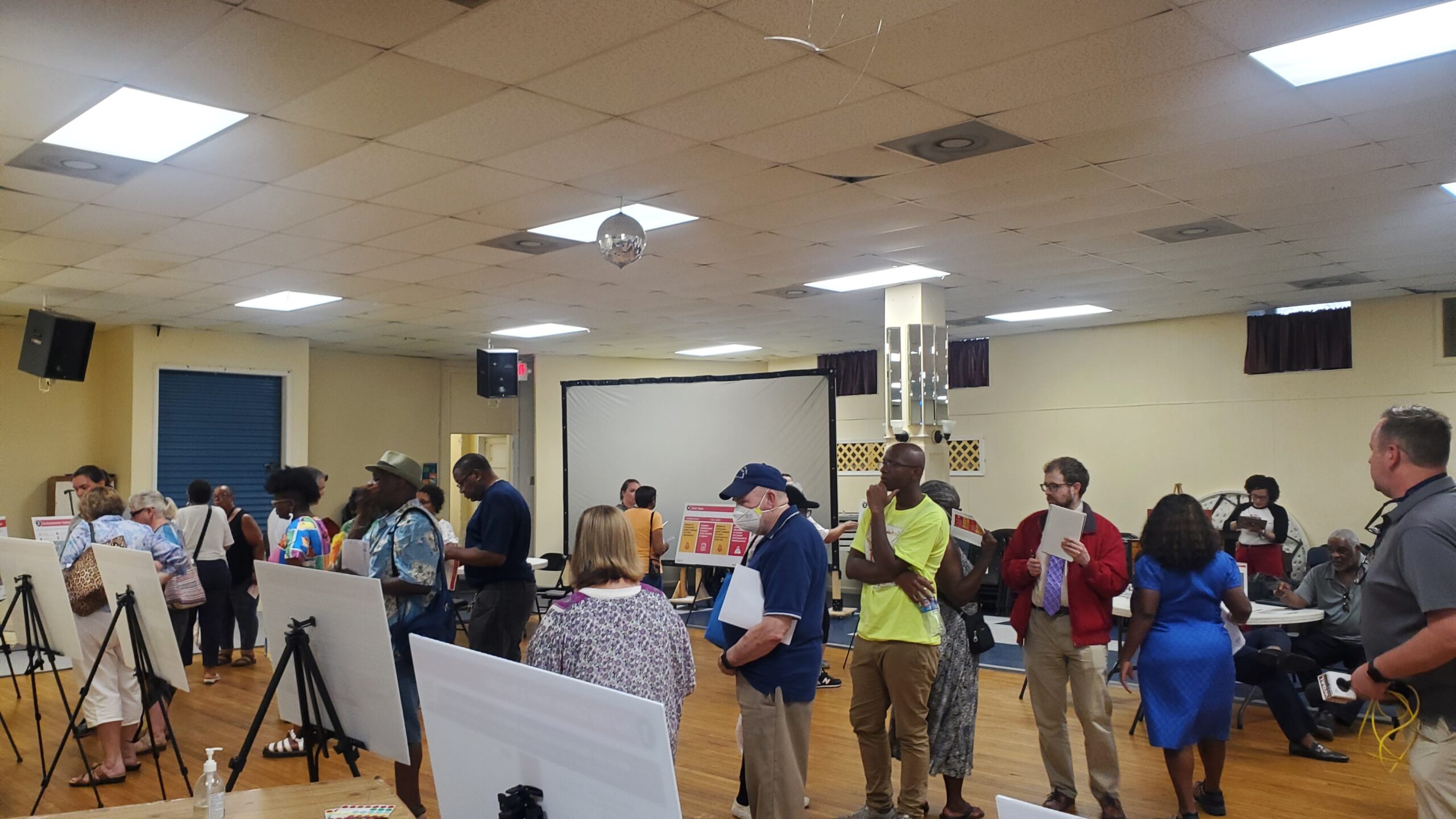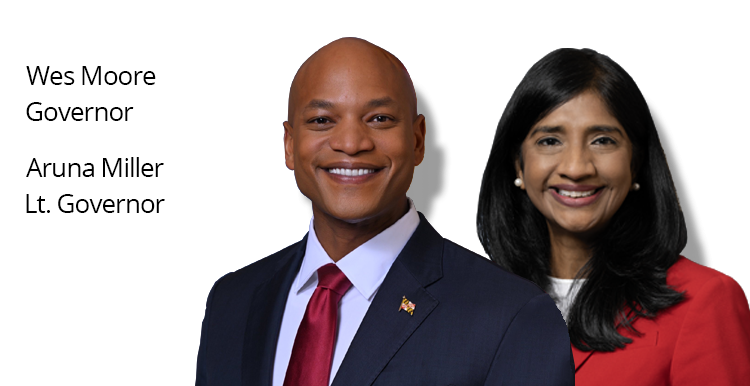
Resources
FAQs

Frequently Asked Questions about the Red Line Project
The Red Line is a planned 14-mile Light Rail line connecting Baltimore’s east-west corridor between Highlandtown and Woodlawn, running through downtown Baltimore. It will predominantly operate on a dedicated right-of-way separate from traffic, providing a vital connection between two key employment hubs in Baltimore County (the Social Security Administration and Centers for Medicare and Medicaid) and Baltimore City (Johns Hopkins Bayview). The Red Line will be an investment in residents’ access to jobs, education, retail, and opportunity. The project builds upon over a decade of technical work, environmental analysis, and community engagement.
The Red Line project is currently in the planning phase of the project where alternatives and alignments are being analyzed to determine the best alternative to move forward into design. Part of the planning process is determining the impacts along the corridor including property that would be needed to implement the project. The Red Line project team will make every effort to avoid any involuntary residential displacements along the 14-mile corridor. The project team will continue to work with the communities along the corridor about the right-of-way needs as the project progresses.
Between seven and twelve years, depending on the alignment and whether the chosen alternative incorporates tunneling. Specific implementation times may also be dependent on the delivery method of the project. MTA will continue to refine the implementation times as the project progresses.
MTA’s transit system has over 300,000 daily trips using its Metro Subway, Light Rail, MARC train, and bus systems. Many of MTA’s top-ridership bus routes travel along the proposed Red Line corridor, and increasing capacity in these corridors is needed. Investing in our high-ridership corridors with premium transit builds upon the system’s strengths and provides our riders with the excellent service they need and deserve.
MTA is continually working to improve the rider experience across all modes, but these investments can happen without getting in the way of much-needed expansion projects. The existing Light Rail and Metro Subway are legacy transit systems dating back to the 1980s and 1990s and are both in the process of procuring/implementing total fleet replacements as well as modern train control and signaling systems. MTA is advancing the Red Line project to provide a modern system that will provide reliable service from day one, as well as create a more robust, extensive, and connected transit network.
MTA already studied Metro Rail, or Heavy Rail Transit (HRT), as a potential modal option during the recent East-West Corridor Feasibility Study. MTA determined that costs, construction impacts, and implementation timeframes associated with HRT did not match preferences voiced by stakeholders and members of the public during the study’s engagement phases. HRT was also eliminated from consideration during the original Red Line planning process because it was too costly and could not meet the cost-effectiveness requirements to compete for funding under FTA’s CIG program.
MTA has analyzed the feasibility of using the current Metro Subway tunnel and implementing the Red Line project with a phased approach and has determined it is not a good option for several reasons. First, a phased HRT option using the existing tunnel does not match the goals for the project or address the needs of the corridor. Second, heavy rail requires grade separation, requiring tunnels or elevated sections, which would add significant complexity, risk, and years to complete the project. Third, a phased approach creates a longer time to fully implement the project that could span decades and future phases are unlikely to proceed. Finally, the project would likely not be competitive for federal funding.
Both tunneled and surface alignments provide transit riders with a better and faster travel experience than existing options in the corridor. While MTA is currently analyzing these different options in terms of traffic, operational, and environmental impacts, we know that in general:
- Tunnels provide greater transit reliability and faster travel times. However, tunnel alignments often include fewer stops, reducing access compared to surface-running options. Additionally, the time it takes for transit riders to travel between the surface and the underground platform impacts total travel time savings. Tunneling also carries greater construction risk, higher costs, and longer implementation time than a surface-running alignment.
- Surface alignments can be implemented with lower costs, fewer risks, and in a shorter timeframe, and can be designed to reflect station area context and character. Baltimore City’s 2018 Complete Streets legislation prioritizes walking, biking, transit, and freight over personal vehicles. This represents a fundamental change from the original Red Line planning process, enabling MTA to take another look at surface-level transit alternatives.
The proposed alignments being analyzed for the Red Line project were identified as areas of need in the original Red Line Draft Environmental Impact Statement process. Effective transit not only connects with predominantly residential areas, but also employment hubs, retail centers, and essential services. An alignment north of Patterson Park would not connect a diverse range of origins and destinations. More recently, MTA has identified the area north of Patterson Park as a separate corridor worth studying for improved transit connections and better access to opportunities; the ongoing East-West RAISE project is designing and implementing near-term infrastructure to improve transit service in that corridor.
In order to build upon the extensive technical and engagement work completed previously, it is necessary to retain the same termini as the original Red Line project. However, concurrent with the Red Line project, MTA launched the Eastern Baltimore County Access Study in early 2024 to evaluate corridor investments between the planned eastern terminus of the Red Line at Hopkins Bayview and major job centers in eastern Baltimore County, such as Tradepoint Atlantic. MTA continues to work closely with employers at Tradepoint Atlantic to provide bus service on the LocalLink 63 and Express Bus 163 that matches shift times and maximizes access.
MTA anticipates a combination of local, state, and federal funds will be used to fund the Red Line. At the state level, funding has already been allocated to carry the Red Line forward through planning. MTA plans to pursue New Starts funding through the FTA’s CIG program, a key source of capital for major transit investments in cities nationwide.
The Maryland Transit Administration (MTA) knows that public engagement and communications are not “one-size-fits-all” activities! We are committed to sharing information through both in-person and web-based tools:
- Join our email list to receive news and updates.
- Follow the Red Line on social media via X, Threads, Facebook, YouTube, and Instagram. Our handle is @redlinemaryland.
- Find all project materials from open houses and other events here.
Finally, we love to come to you! If you would like the Red Line project team to attend your community meeting or neighborhood event, please email us at outreach@redlinemaryland.com.
We anticipate and are planning for the Red Line to run every seven minutes during peak times and every 10 minutes during off peak times. The service will operate from approximately 5 am to 2 am on weekdays. Note: Subject to change as planning and operational elements evolve.


